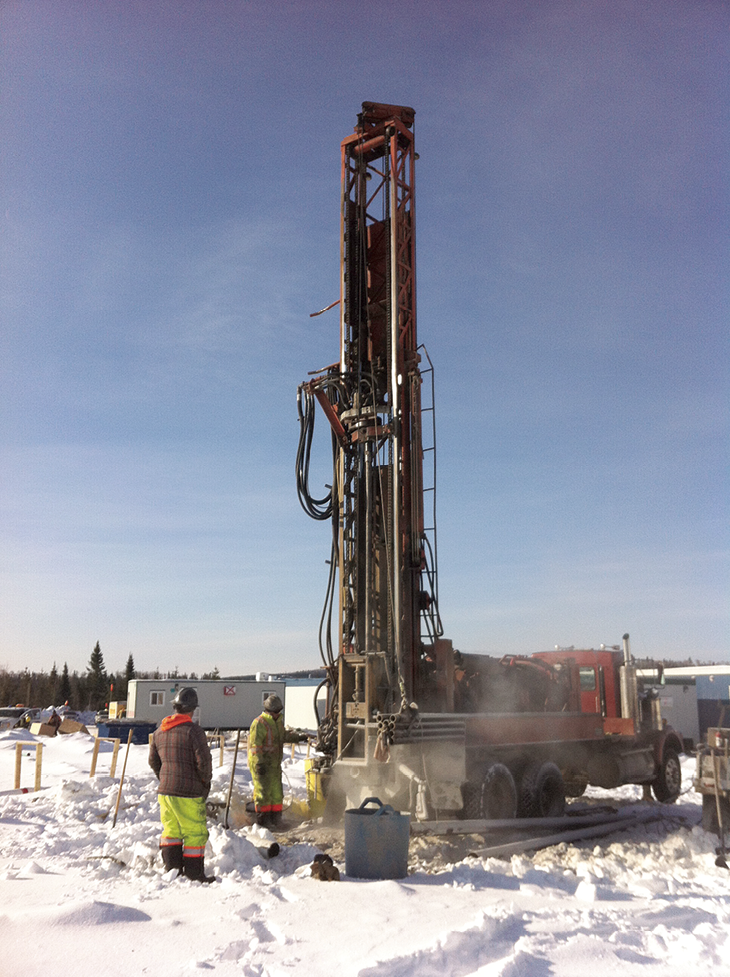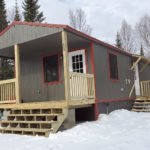Drilling a well is a huge challenge on the North Shore.
Unlike places like the Twin Cities metro area where, according to the Minnesota Department of Health’s Well Owner’s Handbook: A Consumer’s Guide to Well Water in Minnesota, residents typically “draw water from sandstone and limestone rock formations which underlie glacial deposits,” wells on the North Shore by in large draw water from unpredictable “fractured rock formations” such as granite.
Because of these geologic differences, well depths on the North Shore are much less predictable than those of wells that are drilled further south, and, since most people are charged by the depth of their well, that unpredictability can make for a budgeting nightmare.
“Down in the metro area,” says Don McKeever, COO and vice president of McKeever Well Drilling based in Schroeder, “drilling companies know to within 5 feet how deep they’ll have to drill before they start, whereas up here there’s just no way to know for certain until you drill.”
“There are a lot of people who think, ‘Oh it’s just a well, it’s just a big hole in the ground,’” continues McKeever, “but really there is so much more to it than that.”
So, for someone in need of a well on the North Shore, what is the first step?
The best place to start is by reaching out directly to a local North Shore drilling company. Drilling companies with experience drilling wells in this area are going to best understand the unique geological layout of the North Shore and anticipate a project’s needs and challenges before they arise.
Thankfully, there are a number of excellent, time-tested well drilling companies along the shore that have been providing and maintaining clean drinking water to homeowners and businesses for decades.
In the Thunder Bay area, NWO Well Services Ltd has been servicing Northwest Ontario for 60 years. They work on both residential and commercial projects that range in size from small scale private homeowner wells to multinational enterprises.
For good-to-know well drilling information on topics such as the difference between a dug well vs a drilled well, or the potential upsides to drilling a well in the winter instead of the summer, the NWO “Well Owner Info” page on their website (nwowellservices.ca) is as good a place to start as any.
South of the border, Rasmussen Well Drilling Inc in Two Harbors, and McKeever Well Drilling in Schroeder, are two experienced companies that have been drilling wells for decades on the North Shore.
Both Rasmussen and McKeever have an in-depth understanding of what it takes to find water underground in a terrain defined by its fractured rock formations. Each company serves an area that spans most of Northeastern Minnesota, and they both offer complete water systems, water testing, and hydrofracking services in addition to well drilling. McKeever also provides geothermal vertical loop drilling services to
the area.
Contact information for Rasmussen Well Drilling Inc can be found on their website rasmussenwelldrilling.com, and for McKeever Well Drilling at: mckeeverwelldrilling.com.
After reaching out to a local drilling company, the next step is to start making a plan.
“I start by asking each new client A LOT of questions,” says McKeever, “to help the customer start seeing the big picture. It’s important that we understand not only what they want today, but what they think they’ll want to build in the future.”
According to McKeever, understanding the “big picture” is important to ensure that the well gets installed in the “most affordable location.” When planning for a well, McKeever encourages clients to take into consideration things such as sewage planning, meeting setback requirements, and keeping the well accessible.
“We put a lot of effort into pre-planning,” says McKeever, “because that’s what will save the customer time and money. Ultimately we have no control over what’s under the ground.”
“Sure,” continues McKeever, “I have a general idea of what to expect based on nearby wells, scientific data, and my ‘gut feeling,’ but until we actually drill the quantity, quality, and depth of the water is going to be unknown.”
A big part of the “pre-planning” process also involves coming up with an estimate for the well, something that McKeever accomplishes by taking stock of nearby wells and using the deepest one as a “budget number.”
In addition to taking data on nearby wells, McKeever and his team provide rock samples to the Minnesota Geological Survey every 10 feet at each dig. Not only does this practice provide the Minnesota Geological Survey with invaluable data to create more detailed maps of the area, but it allows McKeever to drill better quality wells.
“What we use this information for are areas like Hovland,” says McKeever, “where wells run a higher risk of encountering brackish water, or saline water. Using this information, we’re able to stop drilling before we hit that ‘bad’ water and can then hydrofrack above it.”
All told, the most important thing to do when building a well on the North Shore is to reach out early to a drilling company, and plan before you build.






